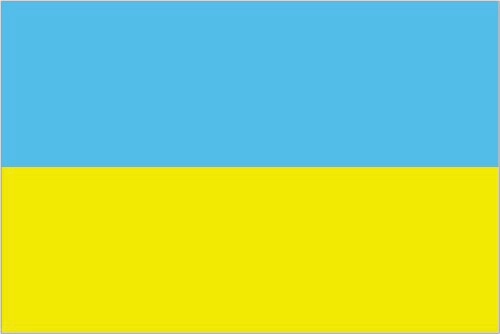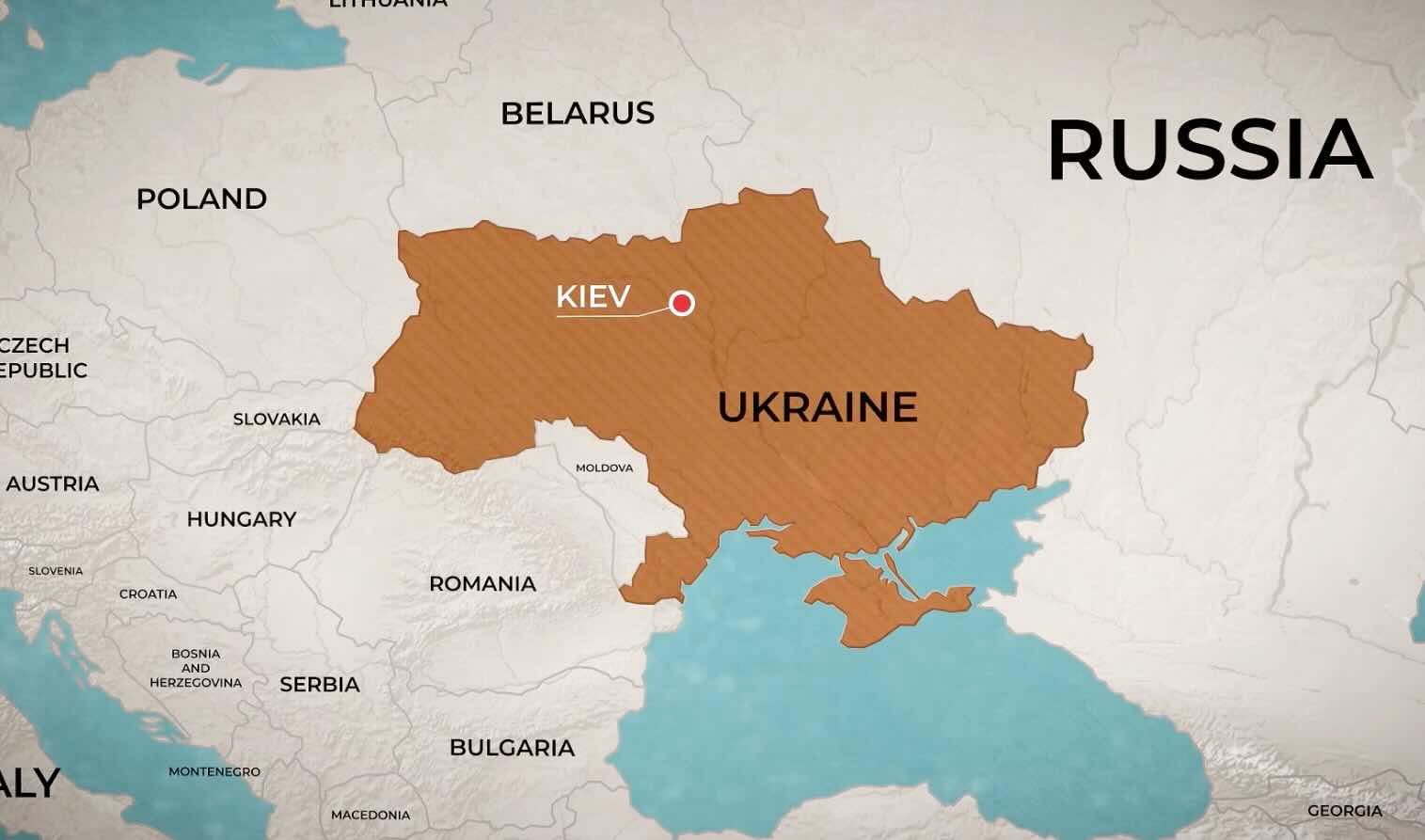Geography of Ukraine • Maps and Facts
- OFFICIAL NAME: Ukraine
- FORM OF GOVERNMENT: Semi-presidential republic
- CAPITAL: Kyiv
- POPULATION: 43 Million
- OFFICIAL LANGUAGE: Ukrainian
- BORDERING COUNTRIES: Poland, Belarus, Russia, Moldova, Romania, Hungary, Slovakia
- CURRENCY: Ukrainian hryvnia
- AREA: 603,628 km²
- MAJOR MOUNTAIN RANGES: Carpathian Mountains, Crimeans
- MAJOR RIVERS: Dnieper, Dniester
Ukraine Flag
The flag has two equal horizontal bands: blue on top and golden yellow below. While these colours have roots in medieval heraldry, today they are often said to represent grain fields under a blue sky.

Size and Location
Ukraine is located in Eastern Europe and is the second-largest European country after Russia. With an area of approximately 600,000 square kilometres, it is twice the size of Italy. Despite this, Ukraine has a smaller population than Italy. Before the conflict, Ukraine’s population was around 44 million, while Italy’s population was around 60 million.
Ukraine borders Russia, Moldova, Romania, Hungary, Slovakia, Poland and Belarus.
Ukraine Sub Division
Ukraine’s administrative system includes 25 regions called Oblasts. Crimea was annexed by Russia in 2014, and two cities with special status (Kyiv and Sevastopol). The country also has 10,885 municipal councils, including 9,644 village councils, 783 town councils, and 458 city councils.
Physical Geography
Most of Ukraine is flat, with mountains in the west and south. The Carpathian Mountains lie in the west, whereas the Crimean Mountains are in the south.
Fertile Black Soil underlies the flat steppe of Ukraine. It has an extensive coastline along the Black Sea.
The country is often called the “breadbasket of Europe” because of its vast steppe, which is ideal for growing wheat.
Watch Now: Geography of Ukraine in a minute
Ukraine Natural Resources
Ukraine is rich in natural resources, making it one of Europe’s key resource hubs. The country has vast deposits of iron ore, coal, and manganese, critical for its industrial sector. Natural gas and oil reserves contribute to its energy needs, while salt, sulfur, and graphite are also abundant. Ukraine is a leading producer of titanium, magnesium, kaolin, nickel, and mercury in various industries.
With extensive timber reserves, Ukraine’s forestry sector is significant. Additionally, its vast arable land makes it one of the world’s top agricultural producers, known for growing grains, sunflower oil, and other crops.
Rivers of Ukraine
Strategically positioned between Europe and Asia, Ukraine is crisscrossed by an extensive network of rivers. The Dnieper is Ukraine’s longest river and Europe’s fourth-longest river. Dneister is another important river flowing in the west.
Dnieper River divides Ukraine from north to south. River Donetz drains the eastern part of the country. These waterways, along with its vast water resources, underscore its importance as a continental crossroads.
Most Ukrainians live in urban cities. Kyiv, the capital and largest city, boasts the world’s deepest metro station, Arsenalna.
Chornobyl Nuclear Disaster
The 1986 Chornobyl nuclear disaster devastated northern Ukraine. At that time, Ukraine was part of the USSR. A reactor explosion caused widespread death and contamination, rendering nearby farmland unusable for millennia.
Russia Ukraine Geopolitical Facts
- Russia has the world’s largest natural gas reserves, the second-largest coal and eighth-largest oil reserves.
- Ukraine is the borderland between Central and Eastern Europe.
- Ukraine is the geopolitical pivot that would determine the influence of Russia in Europe.
A Brief History of Modern Ukraine
Ukraine became independent in 1991. The erstwhile Soviet Union Collapsed and new nations emerged. Ukraine was one of the largest, with a population of 52 million. With an area of 603,628 km², it stretched 1200 kilometres from east to west. In 1991, Ukrainians celebrated their first elections as democracy moved east.
But we can choose our friends and foes but not our neighbours. Democracy could never change Ukraine’s geography. To the east was Russia; to the west were Poland, Slovakia, and Hungary, all three with communist pasts. By 2004, all three had joined the European Union. Being pro-Russia or pro-Europe became a fundamental dividing line in Ukrainian politics. Months later, amidst allegations of electoral fraud, the Orange Revolution began, with two key figures: Viktor Yanukovych, who was pro-Russia and initially declared the winner, and Viktor Yushchenko, who was pro-Europe and would become president after a new vote.
Though the election outcome was resolved, Ukraine’s relationship with Russia remained unsettled. In 2010, the political landscape shifted again as Yanukovych was re-elected. By 2013, he faced a critical decision with far-reaching consequences. Bowing to pressure from Russia, Yanukovych abandoned a landmark deal with the European Union, igniting widespread protests and violent crackdowns across the country. These events, known as the Euromaidan protests, escalated, ultimately forcing Yanukovych to flee Ukraine and seek refuge in Russia, marking a pivotal moment in Ukraine’s ongoing struggle between East and West.
Seizing the moment, Russia annexed Crimea, a key peninsula on the Black Sea. While Russia had long influenced Ukrainian politics, it was now physically dividing the country. Yet, Ukraine’s turn toward the West remained strong, with 68% of Ukrainians favouring EU membership.
Putin, however, sees Ukraine as part of Russia, claiming it as ancient Russian territory. This belief partly drives the current invasion. To Ukraine’s president, the conflict reveals Putin’s deep opposition to Ukraine’s democratic progress since the 1990s. Putin’s invasion isn’t just against Ukraine but also the democratic world. He seeks to destroy what Ukrainians have built since gaining independence, revealing his resentment of Ukraine’s growth since the Soviet Union’s collapse.
Also read: Geography of Belgium.
